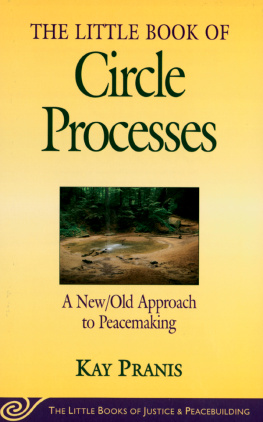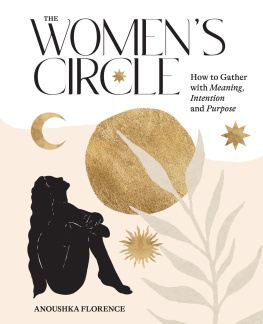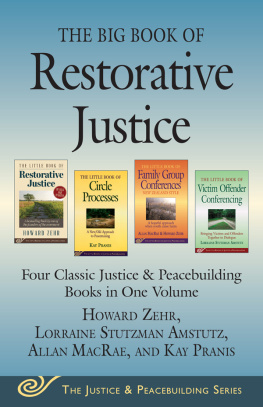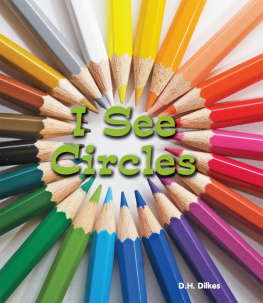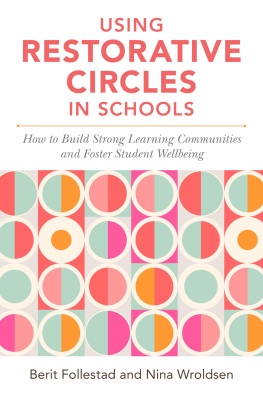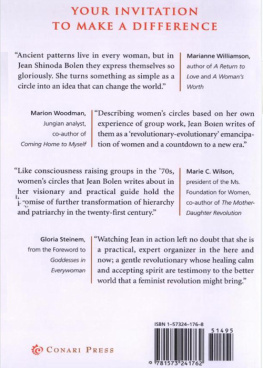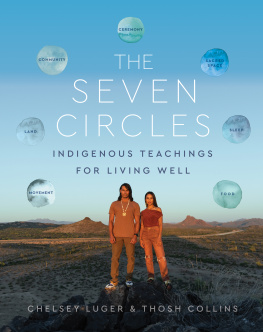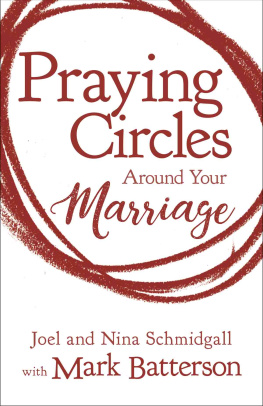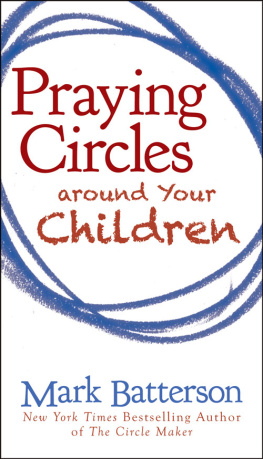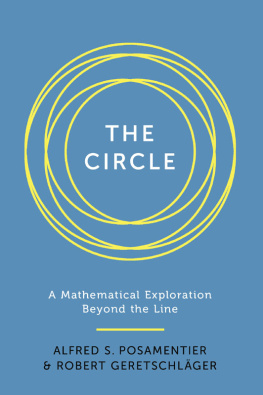Copyright 2014 by Kay Pranis
All rights reserved. No part of this book may be reproduced in any manner without the express written consent of the publisher, except in the case of brief excerpts in critical reviews or articles. All inquiries should be addressed to Good Books, 307 West 36th Street, 11th Floor, New York, NY 10018.
Good Books books may be purchased in bulk at special discounts for sales promotion, corporate gifts, fund-raising, or educational purposes. Special editions can also be created to specifications. For details, contact the Special Sales Department, Good Books, 307 West 36th Street, 11th Floor, New York, NY 10018 or info@skyhorsepublishing.com.
Good Books in an imprint of Skyhorse Publishing, Inc., a Delaware corporation.
Visit our website at www.goodbooks.com.
10 9 8 7 6 5 4 3 2 1
Library of Congress Cataloging-in-Publication Data is available on file.
Cover photograph by Howard Zehr.
Design by Dawn J. Ranck
Print ISBN: 978-1-56148-461-4
Ebook ISBN: 978-1-68099-041-6
Printed in the United States of America
Library of Congress Cataloging-in-Publication Data
Pranis, Kay.
The little book of circle processes : a new/old approach to peacemaking / Kay Pranis.
p. cm.
Includes bibliographical references.
ISBN 1-56148-461-X (pbk.)
1. Conflict management. 2. Healing circles. I. Title.
HM1126.P73 2005
Table of Contents
Introduction
Were all lovers and were all destroyers. Were all frightened and at the same time we all want terribly to trust. This is part of our struggle. We have to help what is most beautiful to emerge in us and to divert the powers of darkness and violence. I learn to be able to say, This is my fragility. I must learn about it and use it in a constructive way.
Jean Vanier
Old things made new
O ur ancestors gathered around a fire in a circle. Families gather around the kitchen table in a circle. Now, we are learning to gather in a circle as a community to solve problems, support one another, and connect to one another.
A new way of bringing people together to understand one another, strengthen bonds, and solve community problems is blossoming in modern Western communities. But this new way is really very old. It draws on the ancient Native American tradition of using a talking piece, an object passed from person to person in a group and which grants the holder sole permission to speak. It combines this ancient tradition with contemporary concepts of democracy and inclusivity in a complex, multicultural society.
Peacemaking Circles are being used in a variety of contexts. In neighborhoods they provide support for those harmed by crime and help decide sentences for those who commit crime. In schools, they create a positive classroom climate and resolve behavior problems. In the workplace, they help address conflict, and in social services they develop more organic support systems for people struggling to get their lives together.
Circles are being used in:
neighborhoods
schools
workplaces
social services
justice systems
The Circle Process is a storytelling process. Every person has a story, and every story has a lesson to offer. In the Circle, people touch one anothers lives by sharing stories that have meaning to them. As the following three vignettes suggest, stories unite people in their common humanity and help them appreciate the depth and beauty of the human experience.
A breathless first-grader runs up to the school administrator supervising the playground. Mrs. Ticiu! Mrs. Ticiu! he exclaims. I need a talking piece! Mrs. Ticiu reaches into her pocket, extracts a small plastic dinosaur, and offers it to the child. He grasps the dinosaur tightly in his fist and dashes off to join several other students who, moments earlier, were arguing. With the help of the talking piece, they discuss their disagreement and find a solution they all like.
Legislators, state policy analysts, state agency administrators, and youth workers sit at tables with adolescents who have gotten into trouble to discuss the state vision for delinquent youth in Minnesota. As a talking piece is passed around the table, each person gets an equal chance to hear and share perspectives. Everyone listens intently to each speaker. After thoughtful listening and discussion, each table reaches a consensus position regarding its assigned topic.
In an inner-city neighborhood, an adolescent and his mom sit in a Circle with nearly a dozen community members and justice system professionals, including a prosecutor and a public defender. The assembled group stands and joins hands to express gratitude for the opportunity to come together as a community to support this adolescent and his family. A talking piece is passed and introductions are made. Each welcomes the youth and his mother to the Circle.
As the talking pieces makes its second round, Circle participants ask the youth about his progress in school, his behavior at home, and his interests. Two members of the Circle have visited his school and offer to help him catch up with his schoolwork. The youths mother expresses grave concern that he is leaving the house without her permission. She talks about her fears for him when he is out on the street after dark.
As the talking piece circulates among those present, Circle participants share fears and anxieties from their own adolescence. In dialogue with the youth, they express care and concern but also clear expectations about school attendance, homework, and checking in with Mom before leaving the house.
Both the youth and his mother respond warmly to the overtures of support and concern from the Circle. Both are able to listen to one another better with the use of the talking piece, and they leave with a better understanding of each others concerns and frustrations.
The youth promises to comply with the agreement, and the group schedules another Circle meeting to check on his progress. The group stands and joins hands for a closing acknowledgment of the hard work done.
Peacemaking Circles like those described above are bringing people together as equals to have honest exchanges about difficult issues and painful experiences in an atmosphere of respect and concern for everyone. In increasingly varied settings, Peacemaking Circles are providing a space in which people from widely divergent perspectives can come together to speak candidly about conflict, pain, and anger and leave those conversations feeling good about themselves and about others.
The philosophy of Circles acknowledges that we are all in need of help and that helping others helps us at the same time.
The underlying philosophy of Circles acknowledges that we are all in need of help and that helping others helps us at the same time. The participants of the Circle benefit from the collective wisdom of everyone in the Circle. Participants are not divided into givers and receivers: everyone is both a giver and a receiver. Circles draw on the life experience and wisdom of all participants to generate new understandings of the problem and new possibilities for solutions.
Peacemaking Circles bring together the ancient wisdom of community and the contemporary value of respect for individual gifts, needs, and differences in a process that:
honors the presence and dignity of every participant
values the contributions of every participant
emphasizes the connectedness of all things
supports emotional and spiritual expression
gives equal voice to all

